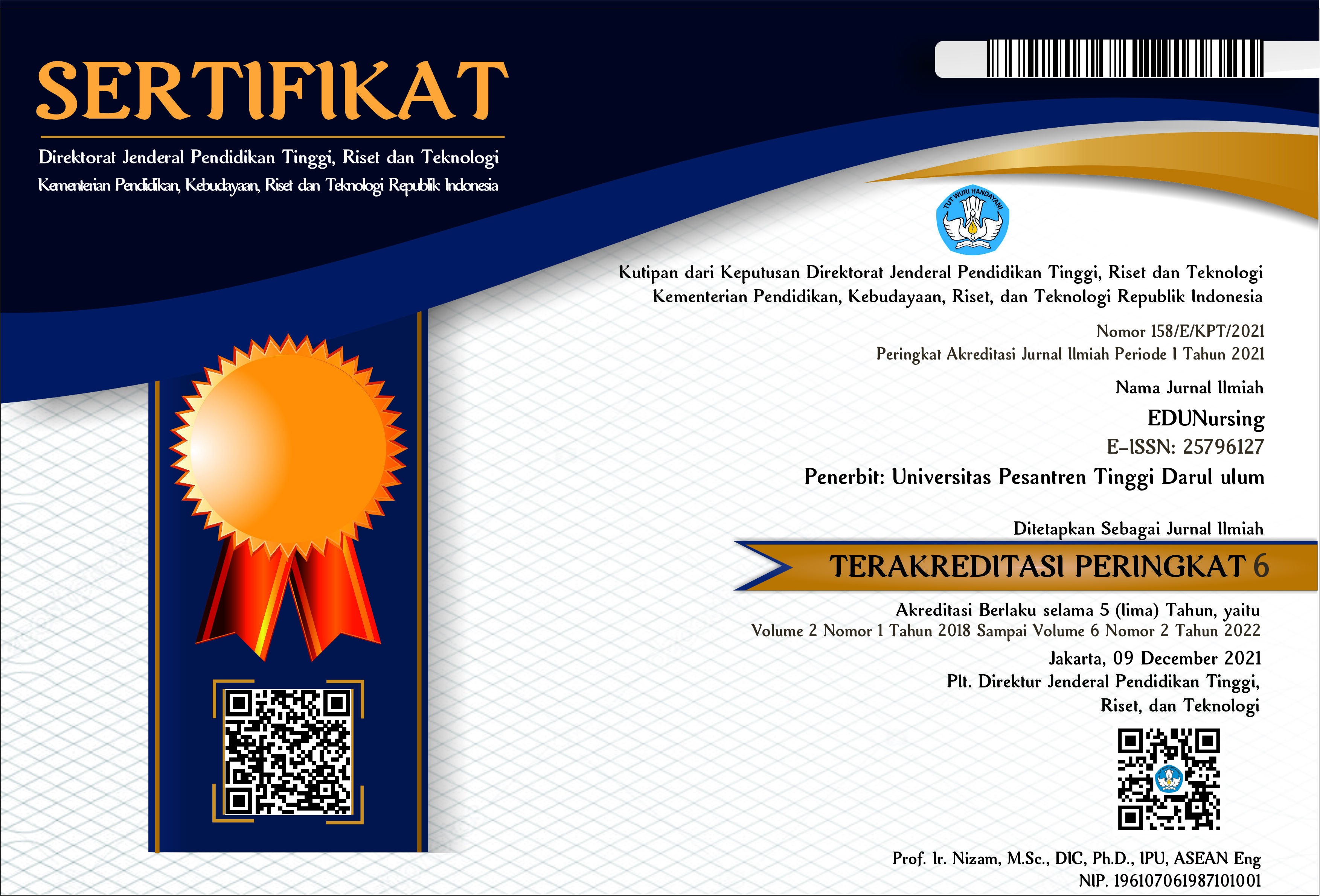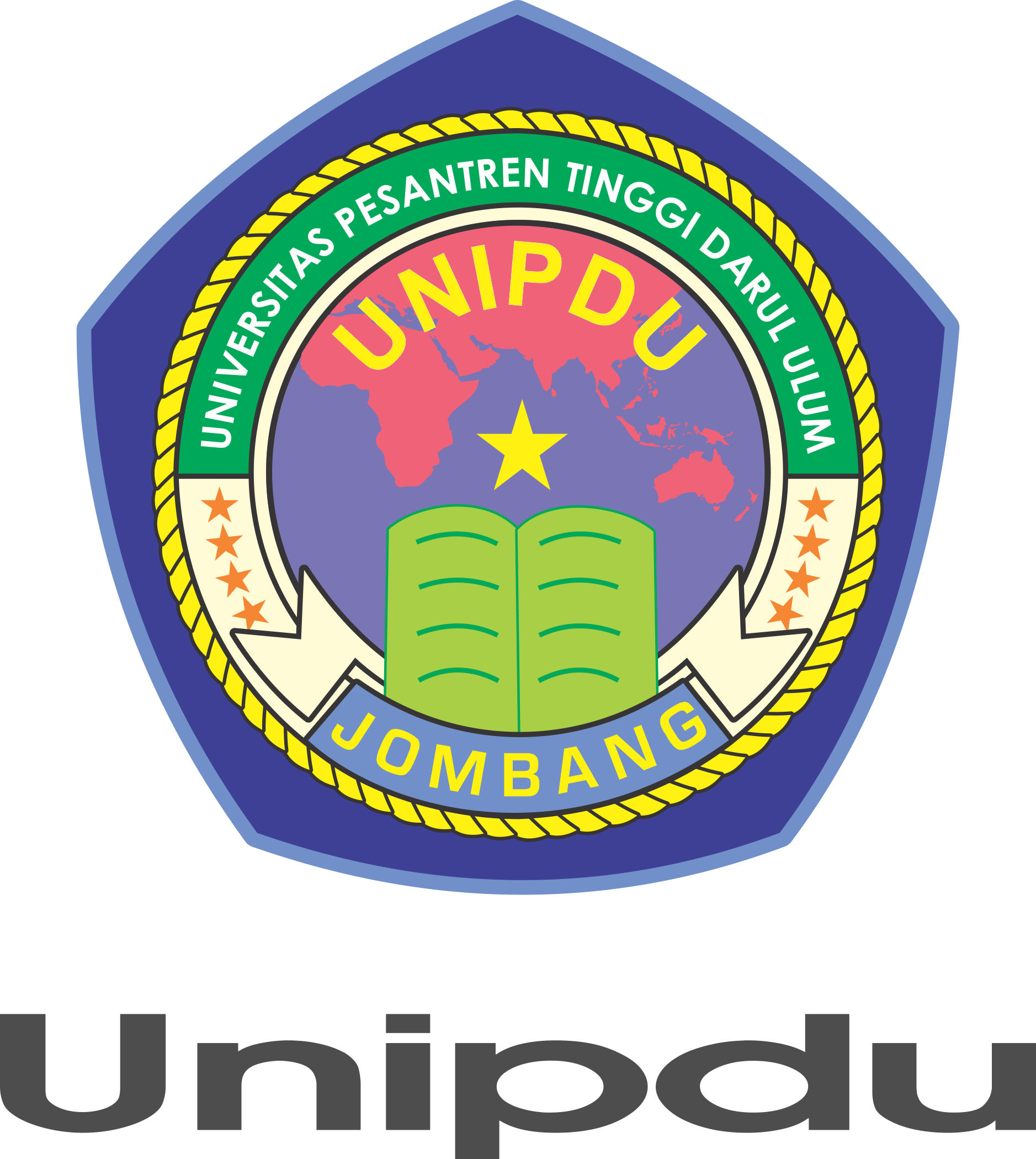PENGARUH AKUPRESUR PADA TITIK TAI CHONG DAN GUANYUAN TERHADAP PENURUNAN INTENSITAS NYERI HAID (DISMENORHEA) PADA REMAJA PUTRI
https://doi.org/10.26594/edunursing.v2i2.1423
Abstract
Menstrual pain (dysmenorrhea) is often experienced by women who is getting menstruation period and it can bother the daily activities. Non pharmacological treatments of dysmenorrhea are using acupressure in Tai Chong and Guanyuan Point. The purpose of this research was to know the difference between the effect of Tai Chong and Guanyuan Point to reduce the pain of dysmenorrhea intensity. The research design used Quasy Experiment with Pretest-Postest Design approach and the sampling used Purposive Sampling technique. The samples were consisted of 60 respondents of female teenagers in the Islamic Boarding School Dormitory of As’Adiyah Darul 'Ulum Jombang which fulfilled the inclusion and exclusion criteria. The instrument of measuring pain was using NRS, the data were analyzed by using Wilcoxon and Mann Whitney with ? ? 0.05. The research results showed that there was an effect on the Tai Chong Point towards menstrual pain with a significant value of 0,000 (p < ?) and there was an effect of acupressure on Guanyuan Point towards menstrual pain with a significant value of 0.000 (p < ?). There was no difference between acupressure group of Tai Chong and Guanyuan Point with significant value 0.637 (p > ?). Acupressure at Tai Chong and Guanyuan Points were effective to reduce dysmenorrhea intensity, clinically the reduction of dysmenorrhea intensity was higher with the acupressure of Tai Chong Point.
Key words: acupressure, dysmenorrhea, adolescent girl
References
Alimatul M. (2017). Pengaruh Akupresur pada Titik Hegu dan Sanyinjiao terhadap Penurunan Intensitas Nyeri Haid (Dismenorhea). Skripsi. S1 Ilmu Keperawatan. FIK. UNIPDU Jombang.
Atrian, M. K., Afshar, M., Sarvieh, M., Ajorpaz, N. M., Taheri, Z. K., Jafrabadi, M. A., & Heshmat, R. (2014). Comparison of Maximum Pain Intensity and Durationpf Primary Dysmenorrhea after Acupressure On Third Liver and Placebo Points: A Double - Blind Randomized Cotrolled Clinical Trial. Nursing Practice Today, 1 ( 4 ) : 192 - 198. Diakses tanggal 18 Oktober 2017. Pukul 12.27
Badan Pusat Statistik. 2015. Jawa Timur dalam Angka Tahun 2015. Surabaya: BPS Provinsi Jawa Timur.
Behbahani, B. M., Ansaripour, L., Akbarzadeh, M., Zare, N., & Hadianfard, M. J. (2016). Comparison of the effects of acupressure and self-care behaviors training on the intensity of primary dysmenorrhea based on McGill pain questionnaire among Shiraz University students. Journal of Research in Medical Sciences, 21: 104. Diakses tanggal 22 Desember 2017. Pukul 11.54
Hawkins, J. W., Nicholas, D. M., & Haney, J. S. (2016). Guidelines for Nurse Practitioners in Gynecologic Settings 11th Edition. New York: Springer Publishing Company, LLC.
Hockenberry, M. J., Wilson, D., & Rodgers, C. C. (2016). Wong's Essentials of Pediatric Nursing Tenth Edition. USA: Elsevier.
Lestari, S. D. (2013). Pengaruh Dismenorea Pada Remaja . Seminar Nasional FMIPA UNDIKSHA III Tahun 2013. Diakses tanggal 22 Desember 2017. Pukul 11:17
Lobo, R. A., Gershenson, D. M., & Valea, F. A. (2017). Comprehensive Gynecology 7Th Edition. USA: Elsevier.
Rajin, Mukhamad. (2017). Keperawatan Komplementer Akupunktur Dasar. Jombang: Program Studi Ners FIK UNIPDU
Rakel, D. (2017). Integrative Medicine Fourth Edition. USA: Elsevier.
Ridwan, M. dan Herlina (2015). Metode Akupresur Untuk Meredakan Nyeri Haid. Jurnal Kesehatan Metro Sai Wawai Volume VIII No.1 Edisi Juni 2015, ISSN: 19779-469X.
Rusdiatin, I. E., & Maulana, D. (2007). Pengaruh Pemberian Teknik Akupresur Terhadap Tingkat Nyeri Persalinan Kala I Di Rumah Sakit Rajawali Citra Potorono Banguntapan Bantul. Seminar Nasional Teknologi 2007.
Sumanto (2013). Penurunan nyeri dismenorhoea menggunakan titik Akupuntur guanyuan (ren 4), guilai (st 29) dan Sanyinjiao (sp 6) pada mahasiswi poltekkes Surakarta.Jurnal Terpadu Ilmu Kesehatan, Volume 4, Nomor 1, Mei 2015, hlm. 64–67.
USMLE. (2018). STEP 2 CK Lecture Notes 2018 Obstetrics and Gynecology. New York: Kaplan
Downloads
Published
How to Cite
Issue
Section
License









